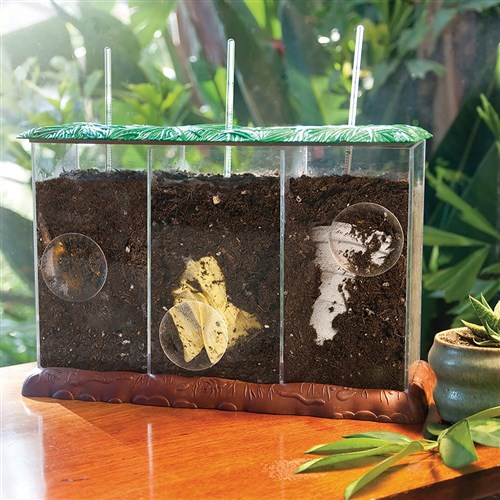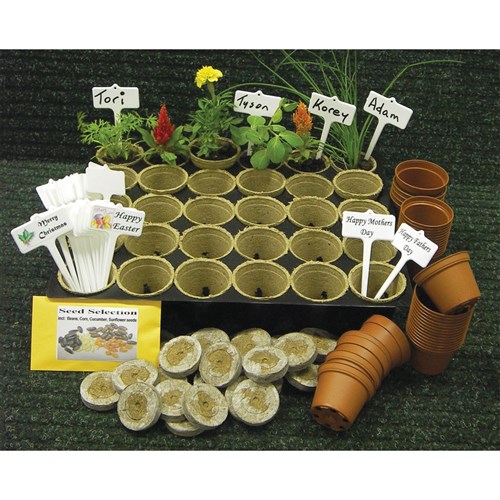With the Australian Curriculum now including a sustainability cross-curriculum priority, it has never been more important to implement sustainable practices in your classroom, across multiple learning areas and lead by example.
Sustainability education develops the knowledge, skills, values, and world views necessary for students to act in ways that contribute to more viable patterns of living for our future. Applying sustainable practices in the classroom is a great way to provide hands-on experiences and making real world connections to the theoretical foundations produced through their studies.
Four ways to help you create a sustainable classroom
1. Minimise waste
Actively reducing waste in the school environment is the first step towards achieving a more sustainable classroom and creating positive behaviours which will continue in the broader environment.
Students can apply the theoretical knowledge and execute a classroom waste audit. A waste audit is a powerful tool designed to identify the main sources of waste and implement change. This will allow students to further develop and articulate their understanding of the different waste types while motivating them to take action and improve their working environment.
A great way to introduce the minimisation of waste in the classroom is by going digital. Paper and paper products are among the highest waste contributors produced by schools. Reducing the amount of paper products used is an achievable option and can be as simple as purchasing digital copies of teaching/learning resources and providing online newsletters.
Did you know that Kookaburra Educational Resources offer digital copies of workbooks and textbooks to purchase? If this is something that would interest you, send us an enquiry today!
2. Create a recycle station
Despite our best intentions, there will continue to be some waste within the school environment. Creating a recycle station can be a fun and creative way to engage students in the recycling process. Students can be assigned to be responsible for the station, helping to correctly sort items into their corresponding bin.
With the assistance of visual identification such as the Gratnells colour coded trays for recycling, each class (or year level) can be involved in a fun intra school activity supporting long term sustainability. Not only do the Gratnells trays create practical colour coded recycling stations, but the trays are even recyclable!
Check out some of the other bin options which you could use for your recycle station!
3. Create a classroom garden and compost station
A classroom garden and composting station are the perfect resources to provide hands on experiences and help students understand the concept of sustainability.
Implementing a composting station helps further students’ knowledge of waste decomposition while helping to clearly identify product life cycles for different materials. Further, creating a classroom garden will provide students with visual reference and identification of ecosystems in action. These resources can be easily maintained by students, emphasising personal responsibility and empowering students’ roles in the classroom.
View our See-through Compost Container and Enviro Grow Classroom Kit below!


4. Sustainable classroom resources
Children often learn through example. Actively working towards a more sustainable environment by purchasing and demonstrating eco-friendly products in the classroom is a good way to lead by example to create change. Let’s start talking about the sustainability of the products we are using in our classrooms and take accountability for our purchasing choices.
Kookaburra supplies a large variety of eco-friendly items available for use in your learning environment. These products are all made using sustainable materials and practices or are a recycled product. We have included some of our favourites at the bottom of this article.
 To assist with sustainable product choices in the classroom, Kookaburra has added the Green Kookaburra to our sustainable products range. For a product to earn the Green Kookaburra logo, it must meet one or more of the following selection criteria.
To assist with sustainable product choices in the classroom, Kookaburra has added the Green Kookaburra to our sustainable products range. For a product to earn the Green Kookaburra logo, it must meet one or more of the following selection criteria.
-
Recycled Content - product must contain a minimum of 10% recycled or post-consumer materials.
-
Sustainable Material Source - product comes from a source that is certified as sustainable under Australian or International Standards. Examples of Standards are FSC, PEFC, AFS Alliance, and Independent Certification - Organisations such as GECA.
-
End of Life Management - product must contain a minimum of 50% biodegradable, degradable or compostable material.
-
Manufacturer End of Life Management - Products where the manufacturer commits to the return of their products for proper disassembly and recycling.
How many Green Kookaburras can you find on the website? To find the answer, contact our friendly customer experience team.